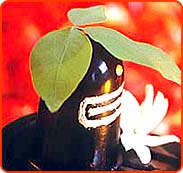 Mohammed solves a dispute over lifting the black stone into position at the Kaaba. The legends tell how, when Mohammed was still a young man, the Kaaba was being rebuilt and a dispute arose between the various clans in Mecca over who had the right rededicate the black stone. (The Kaaba was at that time still a polytheistic shrine, this being many years before Islam was founded.) Mohammed resolved the argument by placing the stone on a cloth and having members of each clan lift the cloth together, raising the black stone into place cooperatively. Miniature illustration on vellum from the book Jami' al-Tawarikh (literally "Compendium of Chronicles" but often referred to as The Universal History or History of the World), by Rashid al-Din, published in Tabriz, Persia, 1307 A.D. Now in the collection of the Edinburgh University Library, Scotland.
Mohammed solves a dispute over lifting the black stone into position at the Kaaba. The legends tell how, when Mohammed was still a young man, the Kaaba was being rebuilt and a dispute arose between the various clans in Mecca over who had the right rededicate the black stone. (The Kaaba was at that time still a polytheistic shrine, this being many years before Islam was founded.) Mohammed resolved the argument by placing the stone on a cloth and having members of each clan lift the cloth together, raising the black stone into place cooperatively. Miniature illustration on vellum from the book Jami' al-Tawarikh (literally "Compendium of Chronicles" but often referred to as The Universal History or History of the World), by Rashid al-Din, published in Tabriz, Persia, 1307 A.D. Now in the collection of the Edinburgh University Library, Scotland. (Hat tip: Brett K. and Martin H.)
The Quran says: "Some men regard other beings as equivalent to God and love them as if they were God but the believers devote all of their love to God." (2:165) "Among His signs are the night and the day and the sun and the moon. Do not bow down and prostrate yourselves before the sun and the moon. Instead, prostrate yourselves humbly before the God that created them." (41:37)
dhyeya sadA savitr maNDala madhyavartI
nArAyaNaH sarasijAsana sanniviSTaH
keyUravAn makara kuNDalavAn kirITI
hArI hiraNmaya vapuH dhrta zaGkha cakraH
"One should meditate on the form of the Lord Who is the source of the Sun's rays. He as the primary creator is seated on a lotus, with golden bracelets, crown, shark earrings; he is golden in complexion, and holds the shankha and chakra in his hands. He alone is the cause of the Sun's shining." (Rg Veda)
Legend of Shiva Linga
 The legend of Shiva Linga or Lingodbhavamurthy is deeply related to Mahashivaratri. The legend narrates the story of vain search by Brahma and Vishnu to discover the Aadi (beginning) and the Antha (end) of Lord Shiva. The legend thus proves the supremacy of Lord Mahadeva over other Hindu Gods and explains why the lingam is believed to be one of the most potent emblems in Hindu ideals. The story is stated in the three of the puranas - the Kurma Purana, the Vayu Purana and Shiva Purana
The legend of Shiva Linga or Lingodbhavamurthy is deeply related to Mahashivaratri. The legend narrates the story of vain search by Brahma and Vishnu to discover the Aadi (beginning) and the Antha (end) of Lord Shiva. The legend thus proves the supremacy of Lord Mahadeva over other Hindu Gods and explains why the lingam is believed to be one of the most potent emblems in Hindu ideals. The story is stated in the three of the puranas - the Kurma Purana, the Vayu Purana and Shiva PuranaThe Legend
According to Puranas, once the other two of the triads of Hindu Gods, Brahma and Vishnu were fighting over each other’s prowess. Horrified at the intensity of the battle, the other gods asked Shiva to intervene. To make them realize the futility of their fight, Lord Shiva assumed the form of a flaming Linga in between Brahma and Vishnu and challenged both of them by asking them to measure the gigantic Linga (phallic symbol of Lord Shiva).
Awestruck by its magnitude, Brahma and Vishnu decided to find one end each to establish supremacy over the other. Lord Brahma took the form of a swan and went upwards while Lord Vishnu assumed the form of Varaha - a boar and went into the earth towards nether land. Both searched for thousands of miles but neither could find the end...read more
The Black Stone (called الحجر الأسود al-Hajaru-l-Aswad in Arabic) is a Muslim relic, which according to Islamic tradition dates back to the time of Adam and Eve. Some geologists and historians[who?] believe it to be a tektite or a meteorite.[1] It is the eastern cornerstone of the Kaaba, the ancient sacred stone building towards which Muslims pray, in the center of the Grand Mosque in Mecca, Saudi Arabia.[2] The Stone is roughly 30 cm (12 in.) in diameter, and 1.5 metres (5 ft.) above the ground.[3]
When pilgrims circle the Kaaba as part of the Tawaf ritual of the Hajj, many of them try, if possible, to stop and kiss the Black Stone seven times, emulating the kiss that it, according to Islamic tradition, received from the Islamic prophet Muhammad.[4] If they cannot reach it, they point to it on each of their seven circuits around the Kaaba.[5]
The Stone was broken into a number of pieces from damage inflicted during the Middle Ages. The pieces are held together by a silver frame, which is fastened by silver nails to the Stone...read more

No comments:
Post a Comment